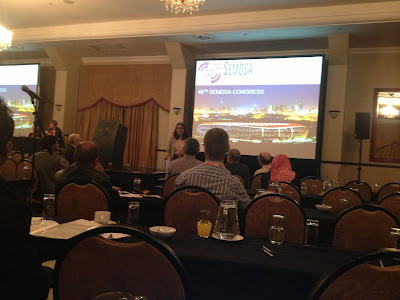Today we had to say goodbye to our wonderful hosts at Bara, Prof Shires and Kershlin, as well as all the other physicians, diabetes educators, and nurses who ensured we had a wonderful and educational experience at Bara Hospital. We thoroughly enjoyed our two weeks, learning about the South African medical system, discussing endocrine cases with endocrinologists, general medicine physicians, surgeons, and radiologists, and meeting patients and hearing about their experiences of medical care. We saw many interesting cases, some advanced endocrine pathology, and learned much from our Bara colleagues.
Additionally, everyone was incredibly welcoming and ensured we were able to see the sights (and taste the delicious food!) of Joburg. We are really looking forward to hosting Prof Shires and Kershlin in Pennsylvania.
 |
| The Endo Ambassadors!! |
I hope you enjoyed the blog and I look forward to meeting you and hearing your thoughts and feedback at ENDO 2013. See you in San Francisco!



























